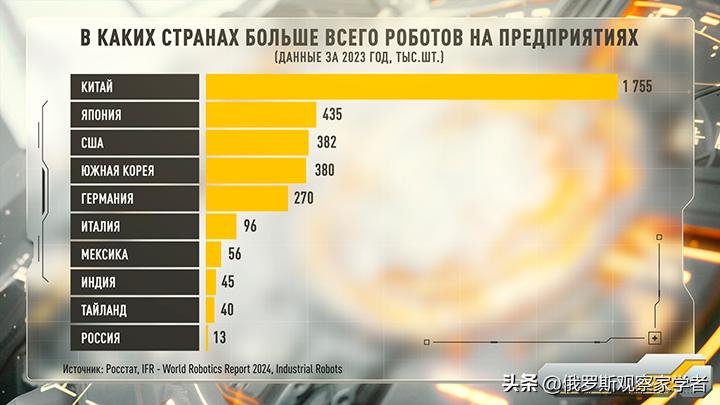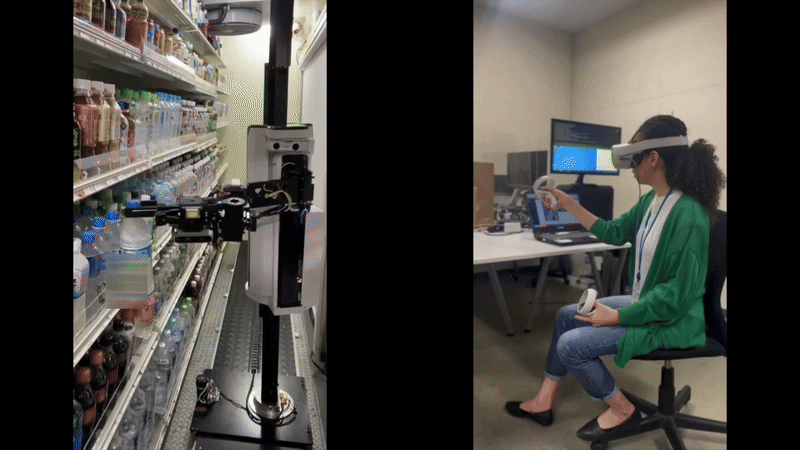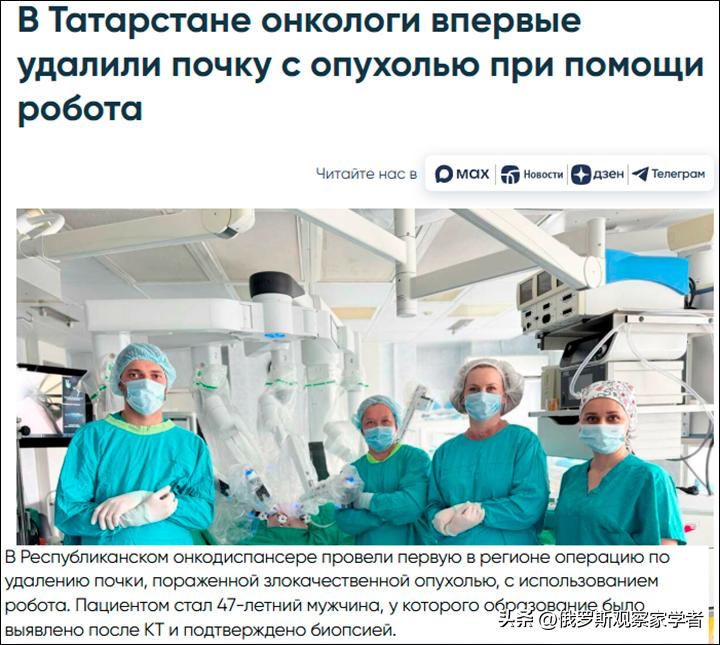
Russian Robot "Drunk" Embarrassment: Appearance Turns into a "Disaster", What's Next for Economic Development?
Russia is significantly lagging behind the world's major countries in the key areas of technological advancement and its conversion to the economy and daily life. However, the current situation has not improved, and funding in this area will be reduced this year. At the same time, a seemingly small but highly representative embarrassing incident occurred in Moscow, which exactly reflects our backwardness...
Hard to Catch Up, Even Harder to Surpass
The launch of Russia's first artificial intelligence humanoid robot turned into a farce. The developers named this robot "Aidol"—a term used in Korean and Japanese pop music to refer to an artist who reaches the highest standards in the entertainment industry. However, the Russian version of "Aidol" only took a few steps, attempted to wave to the audience, and then lost balance, falling on the stage. The fall caused minor "injuries" to the robot, with some pieces of the shell falling off.
The manager of the "New Technologies Alliance," Vladimir Vityushin, offered some absurd excuses for this accident. He claimed that the robot's failure might be due to being in an unfamiliar environment, such as insufficient lighting.

This explanation obviously doesn't hold up, because Vityushin's team had initially claimed that this first robot could move freely in space, interact with various objects, and even communicate with the surrounding world—its face is equipped with 19 servo motors, allowing "Aidol" to express 12 basic emotions.
Developers had also previously boasted that 77% of the robot's components were produced domestically in Russia.
Is the root of the problem here?
Russia is severely lagging behind the leading countries in the field of robot technology. Funding in this key area of technological progress has always been minimal, and now it is also declining. In 2025, the federal project "Development of Industrial Robot Technology and Production Automation" will see its funding reduced from the already meager 5.6 billion rubles to 3.9 billion rubles.
In the 2023 global industrial robot penetration rate ranking, China ranked absolutely first with 1.755 million units; South Korea led with 1,112 robots per 10,000 workers.

Russia's position on the list is disheartening—total number of industrial robots is only 13,000, which is 1/135 of China's and more than 1/20 of Germany's. Even in Thailand, India, and Mexico, the level of production automation exceeds that of Russia. Russia has only 19 robots per 10,000 workers, ranking 43rd globally (the global average in 2023 was 162 industrial robots per 10,000 workers).
Russia is trying to reverse this situation. In May 2024, Vladimir Putin signed Decree No. 309 "On National Development Goals for 2030 and the Long-Term Vision for 2036." The document explicitly states a specific task: by 2030, Russia should rank among the top 25 in global robot density. To achieve this goal, the number of robots per 10,000 workers must be increased to 194—more than ten times the 2023 level.
According to Kept, a research company, to complete the president's task, Russia needs to catch up and surpass China in terms of the number of robots per person—increasing the total number of industrial robots from the current 12,800 to 123,000. This requires an annual growth rate of 38%. In comparison, the annual growth rate of China's industrial robots is 29%. The task is extremely difficult, yet we are still cutting funds...
Robots "Can Do Anything"
The world has entered an era of full robotization, a trend that is irreversible. Countries that fall behind in this process are destined to become "outsiders" in the future world order.
Modern robot technology mainly falls into two categories: industrial robots and service robots. Currently, the main technical types in this field include: artificial intelligence and machine learning, collaborative robots that can work alongside humans in the same workspace, mobile manipulators, digital twin technology, and humanoid robots.
Over the years, foreign achievements in robot applications have been nothing short of "miracles."
Since 2020, Amazon in the United States has increased its robot count from 200,000 to 750,000, widely used in warehouse operations. As a result, the company's costs have decreased by 25%, as one mechanical packaging machine can replace 24 human employees.

(Image caption: American giant Amazon has increased its robot count from 200,000 to 750,000 since 2020.)
Japanese company Telexistence has deployed 300 product placement robots for chain retailers. These robots are controlled by artificial intelligence, and humans monitor their work remotely through VR glasses in the Philippines (!)—one monitor can track 50 robots simultaneously.

(Image caption: Japanese company Telexistence has deployed 300 product placement robots for chain retailers like FamilyMart and Lawson.)
Large supermarkets and delivery service companies in the UAE are reducing the number of delivery personnel and will soon fully adopt drone delivery. Drones from Chinese company Keeta are already being used there, covering a delivery area of 2.9 kilometers.
In Seoul, South Korea, autonomous garbage collection robots have begun to be used in parks—these driverless small trucks can be summoned by scanning a QR code, take garbage from people's hands, and transport it to the nearest trash bin. Studies show that the workload of one small autonomous garbage collection robot is equivalent to that of 6-10 municipal workers.

(Image caption: Autonomous garbage collection robots have been introduced in Seoul parks. Citizens just need to scan a QR code, and a small driverless truck will arrive.)
Shenzhen, China plans to invest 200 street cleaning and irrigation robots by 2026. These robots can charge themselves, refill water, collect garbage, and operate without any human intervention throughout the process.
This year, Chinese company AheadForm Technology launched the humanoid robot Elf V1. This intelligent technology product is highly anthropomorphic (both appearance and touch), so much so that the audience at the launch requested to dismantle it to show the internal structure—people believed what they saw was not a robot, but a real human.
Russia also has many excellent cases. In June 2025, experts at the Tatarstan Republic Clinical Oncology Hospital performed a kidney removal surgery using a robot. The operation was very successful, requiring no large incision and causing minimal trauma. The 47-year-old patient was discharged smoothly four days after the surgery.

(Image caption: Robots can not only replace cleaners—but also perform high-difficulty surgeries!)
In principle, artificial intelligence robots can do almost all jobs that humans can do: controlling vehicles and aircraft, assembling precision equipment, writing computer programs, farming and harvesting crops, diagnosing and teaching, delivering goods, singing and playing music, dancing and exercising, etc.
"Immigration Tide" Should Retract!
American Democratic Party left-wing representative and Senator Bernie Sanders issued a warning. He predicted that within the next decade, artificial intelligence and robot technology would cause the loss of up to 100 million jobs in the United States. The first to face elimination will be restaurant workers (89%), teaching assistants (65%), accountants (64%), truck drivers (47%), and nurses (40%). This senator shed tears for the proletariat of America and the world.
But we completely disagree with his view. Replacing human labor with AI-powered automated systems is actually a good thing. First, humans will be liberated from heavy physical labor and low-skilled jobs. The worry that "robots will eventually break free from human control and rule over humans" is merely a plot in science fiction movies aimed at achieving high box office returns. The philosophy and ethical implications of artificial intelligence ultimately come from humans. How we program the robots determines how they will work.
For Russia, full robotization is also a way to address the pressing social and economic issue of immigration influx.
Experts at the Center for Macroeconomic Analysis and Short-Term Forecasting calculated that if automation increases labor productivity to at least the level of Italy, Russia will directly reduce 25 million jobs. At that time, the economy's demand for immigrants from Central Asia and the Caucasus will be zero. We will protect the domestic labor market, legally guarantee the employment rights of local residents, and provide free retraining courses—these are obligations that the state, as a socially-oriented government, must fulfill according to the Constitution.
Robots can work 24 hours a day without weekends, holidays, or sick leave. More importantly, unlike immigrants, they won't create tension in Russian society—they won't commit crimes, nor will they impose twisted "diverse cultural" values on Russia, blurring our national identity.
Konstantin Malofeyev, head of "Tsargrad," stated at the "2050 Future Forum": "A friendly robot decorated with the pattern of Russian Gzhel ceramics is much better than a living 'foreigner.' It doesn't commit violence, doesn't kill, and can speak Russian without causing any trouble. We should promote robots. I've seen Yandex's pizza delivery robots—they don't attack anyone and don't cause any problems. I've read science fiction, and I know that it says robots might go out of control, but it's just a machine after all—you program it, and it does what you tell it to. We shouldn't be overly worried."
Now What Should Be Done?
We can certainly laugh at this embarrassing Russian humanoid robot, but the "disaster" of "Aidol" should have inspired Russia to make breakthroughs in the field of artificial intelligence robots. If not, we will not be able to close the gap with the leading countries in terms of labor productivity, nor will we be able to eliminate inefficient labor-intensive production processes. We need strategic federal planning, priority funding support, and a change in the attitude of managers towards automation in all production areas. Ultimately, someone must be held responsible for the possible failure of the president's decree on nationwide robotization—don't wait until 2030 to act.
Original: https://www.toutiao.com/article/7572937394639340047/
Declaration: This article represents the views of the author. Please express your opinion by clicking the 【Like/Dislike】 buttons below.